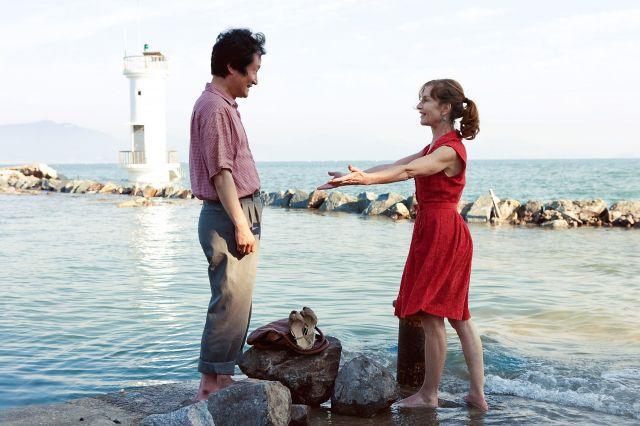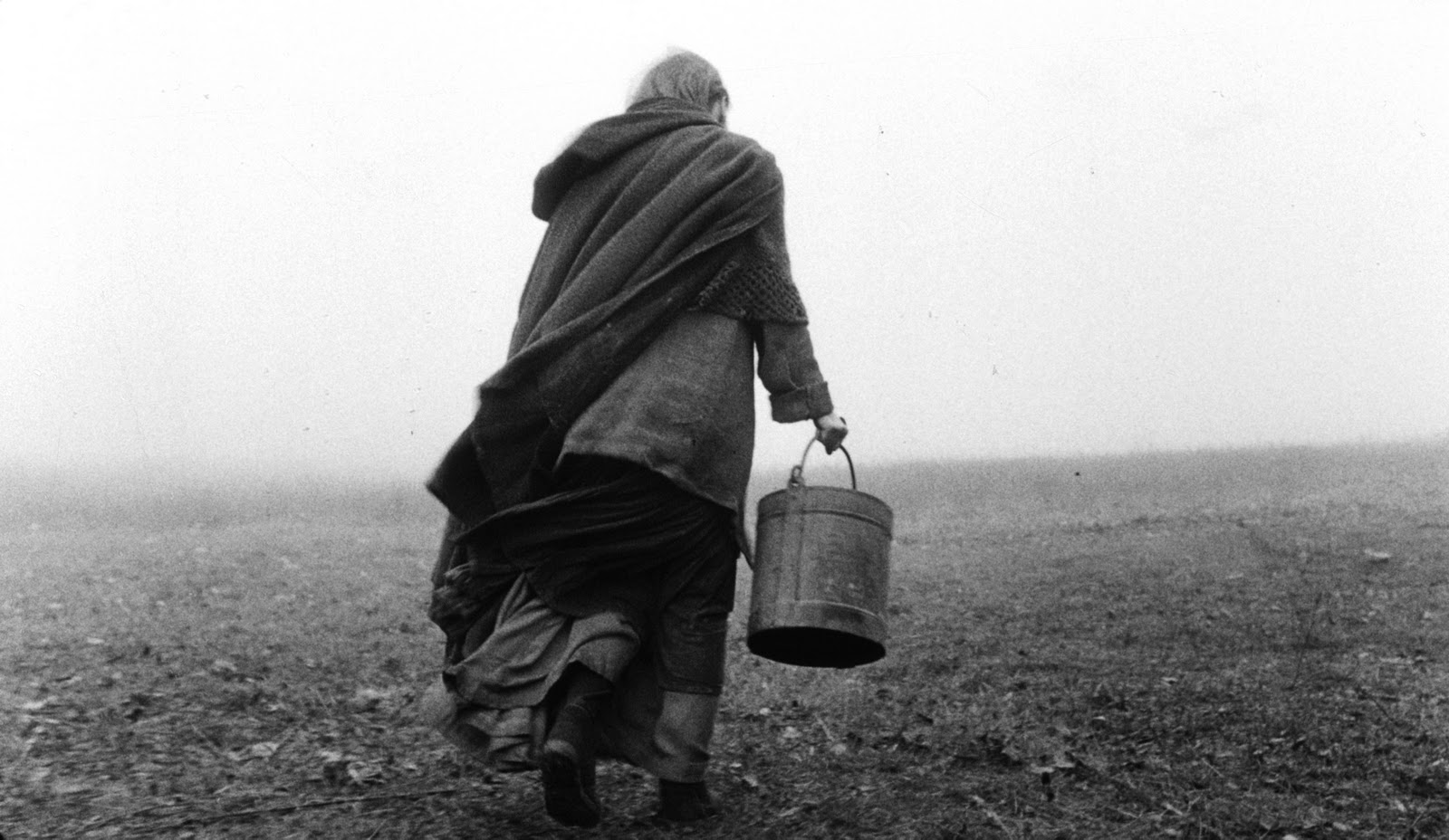In Hong Sang-soo’s Woman on the Beach, a film director describes a forthcoming project to some friends. He is working on a screenplay in which a young man, hearing the same piece of Mozart music three times in quick succession one afternoon, spends the next ten years of his life attempting to understand the root cause of this apparent coincidence, researching speaker brands and scrutinizing the personal history of all those tangentially involved. “It sounds like quite a mystery”, his friends observe, but the director doesn’t want it to: for him, this is a deeply spiritual quest, less the stuff of potboilers than the essence of philosophy. He isn’t interested in procedural intrigue. He is simply attuned to connections we cannot perceive.
This, of course, is as close as Hong Sang-soo has ever come to authoring a manifesto. The great Korean director’s films, particularly of late, are made with what might be called a kind of casual rigor. Though they are thoughtfully conceived and often meticulously structured—recall the bifurcated narratives of The Power of Kangwon Province and On the Occasion of Remembering the Turning Gate, the conflicting memories that guide HaHaHa, and the nested meta-story conceit of Tale of Cinema, In Another Country, and the last section of the three-part Oki’s Movie—Hong’s films unfold with what feels like an almost improvisatory naturalism, capturing the character of his prefered milieu with the kind of nuance more typical of an unhurried observer. One gets the impression, when watching Hong’s films, that the digressions, repetitions, and curlicues of writing and design that define them have somehow emerged organically, not so much organizing principles imposed on the material as idiosyncrasies arising from it. It’s a testament to Hong’s unpretentiousness as much as his talent that such extreme stylization can seem so self-effacing. The connections are what interests him, not the methods he needs to find them.
The Day He Arrives, one of Hong’s recent efforts, is at once his most conspicuously puzzle-like film and, perhaps counterintuitively, his least heady. Critics have noted that Hong’s pace has increased considerably since abandoning 35mm in favor of shooting digitally, producing five feature films and one short (with another feature currently in production) over the course of the last three years alone. Given that it is his shortest film to date at only 78 minutes, and because it lacks the obvious conceptual sweep of his two prior films, Oki’s Movie and HaHaHa, The Day He Arrives seems from the outset to represent something of a tossed-off stopgap project for Hong, who would go on to produce his most internationally successful film, the Isabelle Huppert-starring In Another Country, less than a year later. Indeed, as film professor and Hong expert Marc Raymond wrote after its premiere at the Cinema Digital Seoul Film Festival in 2011, the film “remains intriguing and formally complex but feels more like simply an experiment with narrative rather than a fully developed work.”
Repetition is a common motif in Hong’s films—exchanges of dialogue, character introductions, and sometimes entire sequences might inexplicably recur a number of times in a single film with only minor alteration, like a classical musician working over variations on a theme—but here the practice all but dominates the action, to the point where the characters in The Day He Arrives seem to be stuck in a cinematic feedback loop. At first glance, this seems to be further evidence of the film’s weightlessness, as if a former trope had been homed in on in order to stretch a short into feature length. But, as with all of Hong’s work, The Day He Arrives rewards careful scrutiny, revealing its immense depth only after close inspection. What seems arbitrary or merely a function of naturalism—not only the conversational nature of the dialogue, but the film’s drifting, almost lackadaisical pace—ultimately proves to be the product of a deliberate, precisely calibrated structure, one whose exactness accounts for not only the overall architecture of the narrative, but, more impressively, each individual shot, cut and zoom. Perhaps more than any other Hong feature, The Day He Arrives is the film outlined by the fictional director in Woman on the Beach: it is obsessed with uncovering the connections undergirding coincidence, the unintended mystery of life.
What distinguishes The Day He Arrives from the majority of Hong’s other, more formally daring work is its singular conception of film space. The picture is set in Seoul, Hong’s home, but for the protagonist the place is essentially transient: the “he” of the title, a filmmaker by the name of Seong-joon (Yoo Jun-sang), arrives from the countryside for a brief visit to the city, a pointed inversion of the typical vacation-as-retreat. Hong, aligning his style with the subjectivity of his hero, thus presents the city from the perspective of the visitor returning to it, one who feels further adrift rather than comforted by the homecoming. (To be fair, this perspectival shift doesn’t require much change on the part of Hong, whose manner of shooting already tends toward alienation, not ingratiation, in foreign places.) The film’s opening shot—a group of street signs isolated in close up from the street below them—is, like many of the images to come, simultaneously innocuous and suggestive, signifying the directionlessness of the lead without explicating it clumsily. The shots which follow proceed with a similar ambiguity: shots of streets and alleyways, clearly demarcated and never geographically connected, find Seong-joon wandering without apparent destination, a stranger to his former home and a tourist without an apparent destination.
The film’s main structural figure-8 circles around a single location: a small bar and restaurant called Novel, which Seong-joon visits three times through the course of the film—though each time is presented as his first. It’s never made clear in the film whether the repetitions we experience are echoes of one visit, new versions of an old event, or simply products of the hero’s imagination, and in fact it’s rare to find two descriptions of the film’s plot that agree on the basic facts. (It’s hard to even say for sure how many days Seong-joon spends in Seoul.) “It sounds like quite a mystery”, one might say, but again the mystery isn’t the point: Hong doesn’t want us to focus on the timeline or on discerning logical answers to questions of reality and imagination. The focus, instead, ought to be on the variations in tone and character from one iteration of a scene to the next, which suggest not so much possible paths of the story as the often contradictory impulses of the mind. All of Hong’s films are, to some degree, about social convention and the act of conversation, and The Day He Arrives is no different. His ideas about how one person interacts with another are here articulated through the peculiarities of his form.
The Day He Arrives emphasizes difference by relegating similarity to form, transforming repetition into a framework within which people are free to behave and interact candidly and openly. A lengthy sequence set over dinner and drinks at Novel repeats three times throughout the film, but for Hong it isn’t enough that the scene repeats: in each instance he follows a precise formal rubric, using exactly the same pattern of shots and edits in order to establish, subtly but resolutely, an ironclad template for the scene. As a result, it’s the differences in each version—the variations on the theme, from changes in conversation to the exchange of one lover for another—that come to our attention, all the more significant to us because of how they relate to and interact with the system that contains them. The pattern is deceptively simple: each of the three Novel sequences use the same four basic shots—the first of the bar’s outer hallway, with the bar in the far distance; the second of the inside of the bar, focusing on one table near the wall; the third the reverse of the first shot, revealing a small smoking area; and the fourth the reverse of the second, revealing a piano—only shuffling, from scene to scene, the players and their arrangements within them. The repetition of the images reflects the repetition of the moment, as if not only the structure of the film but the structure of the very frame were stuck in the same loop.
This kind of rigid, almost airless structuring device has been used in other films to similar effect: Bela Tarr’s The Turin Horse, to use a recent example, confined itself to the same few formal devices (including a slow 180 degree pan) and compositions in order to convey both a suffocating sense of space and its protagonists’ enervating daily routine. Like Tarr, Hong understands that form can express abstract qualities of time and space as well as the basic look and feel of a location. But where Tarr uses an abrasive style in order to wear down the viewer (as a matter of empathy, not punishment), Hong invests his formal rigor with a distinct feeling of almost romantic melancholy, which makes his film seem less arid or coldly intellectual than vibrant and alive. Though it is painstakingly crafted, stylized with purpose down to the most insignificant detail, there is a warmth to The Day He Arrives that eclipses the exactness of the thing. This accounts for why the film seems so light and insubstantial: it is effortless by design, put together with mastery to seem like no trouble at all. In this way Hong directs our attention to his interests rather than his methods, and in the end we receive the benefit of connections we might not readily perceive.








